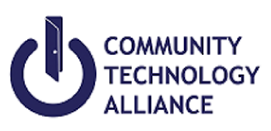The dangers of dirty data
March 1, 2018
High impact organizations understand the benefit of data analytics when it comes to fighting homelessness. When you’re able to analyze clean data, you can discover trends in your community and measure the impact your services have. Most critically, sharing data visually makes it possible to share your results with donors, politicians and the public.
But, the only data that matters is clean data. Inaccurate data does more harm than good. For many organizations, getting clean data is a challenge. Sharing information accurately across devices and formats requires integration. Also, human error can tarnish data during manual entry.
If you’re not confident about your data, you’re not alone. According to a report by Experian, only 44% of organizations trust their data to make important business decisions. In fact, over half of those polled rely on gut feelings or educated guesses when it comes to important decisions.
Unfortunately, if you’re working to end homelessness you can’t afford to repeatedly guess at what will work. Not only will your funding eventually dry up, but the very populations you’re trying to help will suffer.
The big price of dirty data
When your data is filled with mistakes, errors, and incomplete values, it’s known as dirty data. Unreliable data can lead organizations make the wrong conclusions. It’s not just inconvenient; it comes with a high cost. According to The Data Warehouse Institute (TDWI), dirty data costs U.S. companies around $600 billion every year.
When your data is clean, you can make accurate conclusions. You’ll be able to confidently adjust and fine tune programming based on what you learn.
Cleaning up your data can also help you:
- Compare 2016 system performance measures against 2017 system performance measures
- Share the data visually with the community at large so anyone can understand it
- Help funders, politicians and citizens understand population trends and what’s impacting homelessness
CTA can help you clean up and analyze your data. This essential tool will help you get the most out of your existing systems resources and make it easier to make a bigger impact.

